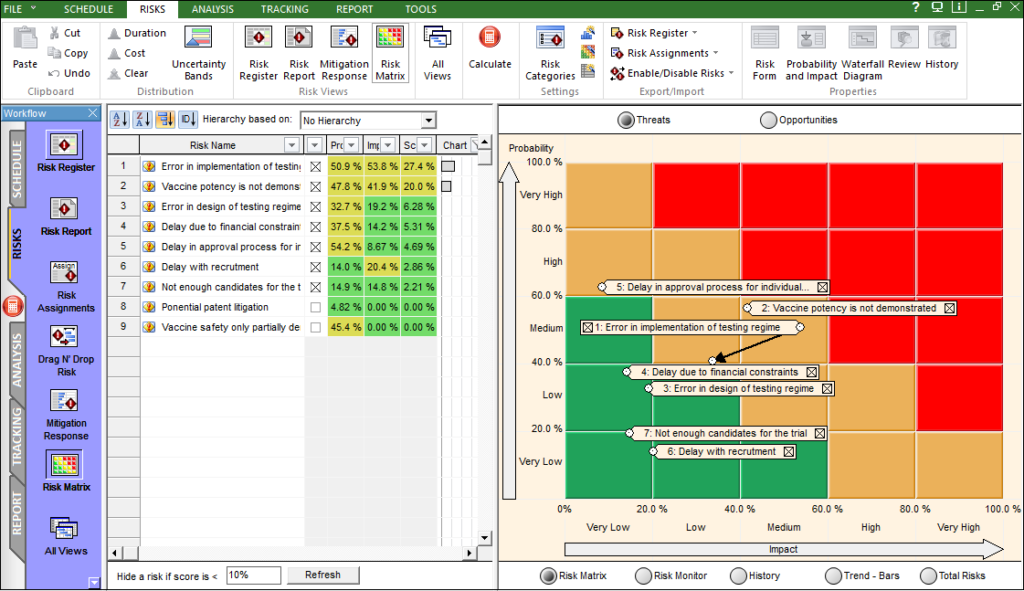Risk analysis and management in the Pharmaceutical industry is typically associated with the risks and benefits of particular drugs or vaccines. Are they safe and effective, can they be manufactured economically, are they affordable? However, for the companies and teams that are developing the products and bringing them to market, their objective is profit and this means minimizing losses and getting to market on time. To ensure profitability, pharmaceutical companies need effective project risk management processes.
Developing Drugs is Risky
The process of taking promising molecules and turning them into drugs that can be introduced to the market is a high risk, high reward enterprise. It has been estimated that of all potentials substances that undergo preliminary investigation as a potential pharmaceutical, less than 1 in 1000 make it to market. While this could be said of developing and marketing any new product, developing pharmaceuticals poses unique challenges. Pharmaceuticals go through a rigorous and expensive testing and development process that culminates with multi-phase trials to prove the efficacy and safety of the pharmaceutical for market. Therefore, companies manage risks in their project portfolio to focus investment on projects with a higher chance of success. Pharmaceutical companies use an enterprise risk management process to manage all risks in portfolio and project risks in particular.
Analyzing the Development Process
This process can be extremely complex and modelling it can look like a series of loops and branches that include a series of tests, failures, and loops where faults are remedied and subject to retesting. The goal of analyzing this process is to understand what is the chance of final success, when will it be finished, and how much might it cost. This process can be modeled using a combination of Probabilistic Branching and Monte Carlo Simulations.
Watch how Monte Carlo Simulations with Probabilistic branching can help pharmaceutical companies determine the chance of project success.
Managing Risks
The result of a Monte Carlo simulation is a risk adjusted project schedule. This is a realistic project schedule that takes into account risks and uncertainties that could affect the project. Monte Carlo simulation also helps to determine a project forecast.
In addition to generating risk adjusted cost and schedule forecasts and success rates, Monte Carlo simulations will identify and prioritize project risks. This ranking of the risks supports decision making on both the manageability and priority for risk planning.

How RiskyProject can help Pharmaceutical Companies
- Enterprise Risk Registers help Pharmaceutical companies manage risks which affect not only project schedule and cost, but also safety, public relations, litigation, etc. RiskyProject uses an integrated Risk Register with schedule related and non-schedule risks. Risks are ranked based on their calculated scores. The Risk Register can be shared among different projects in project portfolios.
- Probabilistic branching helps pharmaceutical companies to determine chance of success of their clinical trials and other research activities.
- Mitigation and Response Plans in RiskyProject can be assigned to critical risks in different projects within a project portfolio. RiskyProject can compare different mitigation and response plans and determine efficiency of mitigation efforts.
- RiskyProject calculates risk adjusted schedule which can be used as a baseline for managing projects. RiskyProject also allows defining actuals and use can use these actuals at any phase of the project to forecast final cost, duration and success rate of the project.

